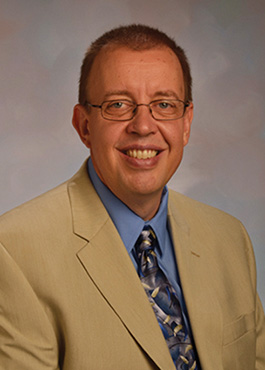
Global Identity
At the beginning of the new academic year, let me begin by welcoming our new students. We have 42 new undergraduates, 35 of whom are in their first year of college and seven of whom are transfer students, and 120 returning students. Overall, there are now 162 declared majors, 34 freshmen, 34 sophomores, 34 juniors, and 60 seniors. From a historical perspective, these are impressive numbers for our department. In addition, we recruited 24 graduate teaching assistants (GTAs) and three graduate research assistants (GRAs). Our GTAs will be teaching the undergraduate laboratories or grading homework papers, while taking graduate level classes and (for many) preparing for the PhD qualifying exam. After two years, all of them are expected to find a faculty advisor to work on their doctoral or master’s research. The new GRAs already have research support and will be working with their research advisors and take graduate courses. This year’s cohort is the largest for as long as I can remember and we are very proud of the fact that they have chosen UT Physics. The graduate recruiting and admissions committee led by Associate Professor Christine Nattrass deserves all the credit for a very successful recruiting season.
It is also a great pleasure to welcome Dr. Nau Raj Pokhrel as our third full-time lecturer. Nau Raj received his PhD in physics from Florida International University in 2016 with a specialization in radio astronomy. Since Fall 2017, he worked as a full-time lecturer at South Texas College before joining our department on August 1. Nau Raj is joining our other two lecturers, Margie Abdelrazek and Sean Lindsay, in teaching our general education and service courses.
Historically, the success of American universities and specifically the pioneering role of US physics programs has been largely attributed to the fact that US universities have been able to attract the brightest students from around the world since the very beginning of World War II. Bringing together top students and faculty with very diverse backgrounds has been one of the greatest success formulae for advancing physics both here and abroad. Many graduate physics programs still thrive by admitting a mixture of domestic and foreign applicants, and our department is no exception. Roughly one half of our new students came from abroad, and about one-half of the UT physics faculty originate from foreign nations: 16 in all. Unfortunately, the internationalization of higher education, especially that of the STEM disciplines, is currently under duress. In recent years, US universities have witnessed a sudden decline in international applicants. Again, our department is no exception. We have seen steady declines since 2016 and a dramatic reduction of Chinese applicants just this year. Possible reasons behind this decline include increased international competition, which provides excellent opportunities for students to pursue graduate studies either in their home country or countries other than the US. Indeed, many of us have witnessed up close the incredible rise of physics in China and the enormous investments by the Chinese government in research infrastructure and faculty recruiting. On a smaller scale, similar trends are happening in Korea, where the Institute of Basic Science represents a major investment into top-notch infrastructure and top-level recruits. These are great places to do physics.
Competition is of course very healthy and provides wonderful opportunities for international collaboration. However, the decline in international applicants is also related to recent changes in US immigration policies that make foreign students increasingly anxious about visa and travel restrictions. (For example, among our 24 incoming GTAs, three students are still waiting for their visas to be approved.) While some of these restrictions are driven by legitimate government concerns about military and economy espionage, this change in policy does affect the entire academic enterprise. It particularly raises concerns among some of our foreign colleagues, many of whom still have personal and professional ties to their native countries, that they may be inadvertently singled out and restricted in exercising their profession, or worse. These anxieties are real and affect their research collaborations, their travel plans, and opportunities to present their work at international meetings. They are widespread and also live within the UT community and within our own department. This makes it all the more important that we nurture our global identity and collectively reaffirm our commitment to support our international students and faculty, making sure that our department continues to feel like home to all.